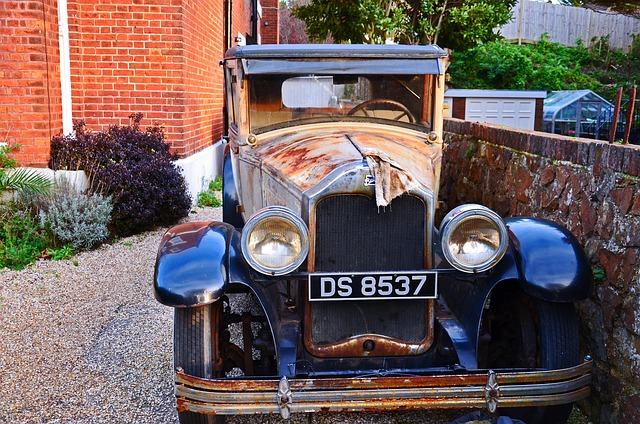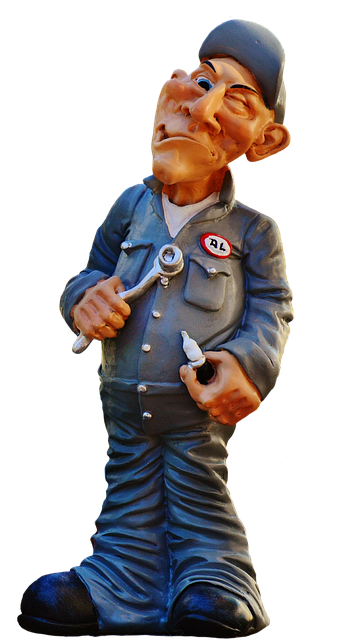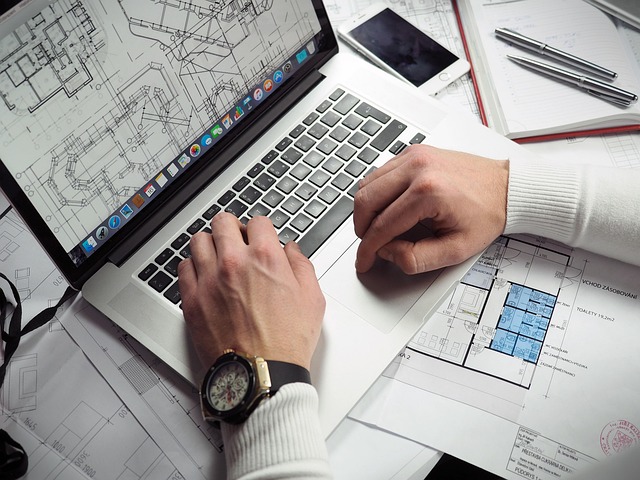Domestic Auto Body Repair: Key to Preserving Vehicle Value
Prompt and professional domestic auto body repair is key to preserving a car's value and resale…….
In the realm of automotive maintenance and restoration, domestic auto body repair stands as a cornerstone, encompassing the intricate process of restoring and refurbishing vehicles to their original or desired condition. This comprehensive guide delves into the multifaceted world of domestic auto body repair, exploring its historical roots, current practices, global impact, economic significance, technological innovations, regulatory landscape, challenges, and future prospects. By the end of this article, readers will gain a thorough understanding of this vital industry, its contributions, and its role in shaping the automotive sector.
Definition: Domestic auto body repair refers to the specialized process of repairing and restoring damaged automobile bodies, ensuring they meet safety standards and aesthetic appeal. It involves a range of techniques and skills, from structural repairs to panel replacement and finishing touches.
Core Components:
Structural Repairs: This aspect focuses on realigning and reinforcing the vehicle’s framework, ensuring structural integrity after damage. Techniques include welding, metal fabrication, and the use of specialized tools for precision adjustments.
Panel Replacement: Damaged or dented panels are replaced with new ones, maintaining the vehicle’s original design and aesthetics. Skilled technicians use specific techniques for various panel types, such as steel, aluminum, and composite materials.
Painting and Finishing: The art of applying paint and finishes to restore the car’s exterior to its original condition or achieve a desired custom look is a crucial part. This includes surface preparation, painting, clear coating, and final inspection.
Electrical and Digital Systems: Modern vehicles have complex electrical systems, and auto body repairmen need to address any related issues. This involves diagnosing and repairing sensors, wiring harnesses, and modern car-computer interfaces.
Historical Context:
The roots of domestic auto body repair can be traced back to the early 20th century as automobiles became more prevalent on the roads. With increased usage came a growing need for repairs, leading to the establishment of specialized workshops. Over time, the industry evolved with advancements in vehicle technology, safety standards, and environmental regulations. The post-World War II era saw a boom in domestic auto manufacturing, driving the demand for body repair services. As cars became more sophisticated, so did the techniques and tools employed in repairs, keeping pace with technological innovations.
Domestic auto body repair is a global phenomenon, with varying practices and standards across regions. Here’s a glimpse into its international influence:
| Region | Key Trends | Unique Aspects |
|---|---|---|
| North America | High emphasis on precision and customer satisfaction; adoption of advanced painting techniques | Stricter safety regulations drive repair methods |
| Europe | Focus on eco-friendly practices; use of innovative materials like composite panels | Diverse vehicle models require specialized repairs |
| Asia Pacific | Rapid growth in the industry due to increasing vehicle ownership; cost-effective solutions prevalent | Traditional and modern techniques coexist |
| Latin America | Emphasis on affordability; informal repair sectors thrive | Localized parts availability influences practices |
Global trends shape the industry, with advancements in technology and sustainability taking center stage. For instance, the rise of electric vehicles (EVs) presents unique challenges and opportunities for body repairers, requiring specialized knowledge to handle new battery systems and lightweight materials. Additionally, the global push towards sustainability has led to the development of more environmentally friendly repairs, recycling materials, and reducing waste.
The domestic auto body repair industry plays a significant role in economic systems worldwide:
Market Dynamics: The market is highly competitive, with various players, from independent workshops to large franchise operations. The demand for repairs fluctuates based on vehicle ownership rates, economic conditions, and safety regulations.
Investment Patterns: Significant investments are made in equipment, training, and technology to stay ahead in the industry. Modern repair facilities employ advanced tools, software for diagnostics, and specialized training programs to enhance efficiency and quality.
Economic Impact: Repair shops contribute to local economies by providing employment opportunities and supporting the automotive supply chain. The industry’s growth or decline can influence related sectors, such as car dealerships, insurance companies, and parts manufacturers.
Technology has revolutionized domestic auto body repair, improving efficiency, precision, and customer experience:
Computerized Diagnostics: Modern vehicles are equipped with complex onboard computers, making precise diagnostics a breeze. Advanced scanning tools allow technicians to quickly identify issues, saving time and reducing the risk of misdiagnosis.
Robotic Welding: Robotic arms offer consistent and accurate welding, especially in tight spaces, leading to faster repair times and improved strength.
3D Printing: This technology is making waves in the industry, enabling on-demand printing of custom parts, reducing lead times, and offering cost-effective solutions for rare or unique components.
Digital Painting and Design: Computer-aided design (CAD) software allows technicians to plan and visualize repairs, ensuring precision painting and finishes. Digital paint matching ensures an exact match with the vehicle’s original color.
Government regulations significantly influence domestic auto body repair practices:
Safety Standards: Strict safety regulations govern structural integrity, crash testing, and airbag systems, guiding repair methods to ensure vehicles meet these standards after an accident.
Emissions Controls: Environmental laws dictate the handling of hazardous materials, waste disposal, and emissions control systems, prompting repairs with eco-friendly practices.
Consumer Protection: Laws protect consumers’ rights, ensuring fair pricing, quality workmanship, and dispute resolution mechanisms for repair services.
Training and Certification: Many countries mandate specific training and certification programs to ensure technicians meet professional standards and stay updated on industry advancements.
Despite its significance, the domestic auto body repair industry faces several challenges:
Skills Shortage: The demand for skilled technicians often exceeds supply, leading to workforce shortages. Continuous training and apprenticeship programs are essential to address this gap.
Increasing Costs: Rising costs of parts, equipment, and labor can impact profitability, especially in regions with high living expenses. Efficient inventory management and cost-effective solutions are crucial.
Customer Expectations: With the advancement of technology, customers now expect faster turnaround times and higher-quality repairs. Meeting these expectations while maintaining competitive pricing is a constant challenge.
Environmental Concerns: The industry’s impact on the environment, from waste disposal to energy consumption, prompts the need for eco-friendly practices and sustainable solutions.
Case Study 1: Sustainable Repair in Europe
A renowned European body shop, GreenAuto Repairs, has set a new standard for eco-friendly auto body repair. They employ recycled materials, use water-based paints, and implement energy-efficient practices throughout their facility. This approach not only reduces their environmental footprint but also attracts environmentally conscious customers. Their success lies in combining traditional skills with innovative, sustainable techniques, positioning them as industry leaders.
Case Study 2: Precision Repair for Luxury Vehicles
In the United States, Elite Motorworks has gained recognition for its specialized repair services on luxury and classic cars. They employ a team of experienced technicians trained in the latest computer-aided technologies. By combining advanced diagnostics with traditional craftsmanship, they restore vehicles to their original condition, earning a loyal customer base. Their success demonstrates the importance of investing in training and embracing technology for precision repairs.
The domestic auto body repair industry is poised for growth and innovation:
Sustainability and Green Technologies: The push for sustainability will drive the adoption of eco-friendly materials, recycling practices, and renewable energy sources in repair facilities.
Advanced Robotics: Robotic systems will continue to evolve, offering improved precision, efficiency, and cost savings, particularly in welding and paint application.
Digital Transformation: Digital tools and software will revolutionize workflow management, customer engagement, and remote diagnostics, enabling faster and more efficient repairs.
Customized Repairs: With the rise of unique vehicle designs and personalized preferences, custom repair solutions will gain popularity, allowing owners to express their individuality.
Electric Vehicle (EV) Specialization: As EV adoption grows, specialized training and equipment for repairing and maintaining these vehicles will become essential.
Domestic auto body repair is a dynamic industry that has evolved significantly over the years, driven by technological advancements, changing consumer preferences, and global trends. From its historical roots to the cutting-edge practices of today, this sector plays a vital role in maintaining and restoring vehicles to their best condition. As we look ahead, the industry stands at the intersection of tradition and innovation, poised to embrace new challenges and opportunities.
By understanding the intricacies of domestic auto body repair, from its technical aspects to global implications, businesses, policymakers, and enthusiasts can contribute to its continued growth and success. This article has provided a comprehensive overview, highlighting the industry’s significance and potential for future development.
Q: What qualifications do I need to become an auto body repair technician?
A: While requirements vary by region, most countries mandate formal training through technical schools or apprenticeships. Certification programs and ongoing professional development are essential to stay updated on industry standards.
Q: How does the cost of repairing a vehicle differ from its original manufacturing quality?
A: Repair costs can vary depending on the extent of damage, availability of parts, and labor rates. While repairs strive to match the vehicle’s original condition, they may not always reach the exact same level of precision as new manufacturing, especially for highly specialized or custom work.
Q: Are there any environmental benefits to repairing a damaged car instead of buying a new one?
A: Absolutely! Repairing vehicles helps reduce automotive waste, conserves resources, and lowers energy consumption associated with producing new cars. It’s an environmentally responsible choice that contributes to sustainability.
Q: How can I choose a reliable auto body repair shop?
A: Look for shops with proper certifications, positive customer reviews, and transparent pricing. Inquire about their experience with your vehicle’s make and model, and ensure they use high-quality parts and advanced repair techniques. A well-reputable shop will prioritize your safety and satisfaction.

Domestic auto body repair is a specialized service for restoring vehicles to pre-accident condition…….

The exterior condition of a vehicle greatly influences its market value, with auto body damage from…….

Domestic auto body repair prioritizes safety, structural integrity, and optimal vehicle performance……..

Embarking on domestic auto body repair requires equipping yourself with essential tools, materials,…….

For successful domestic auto body repair, a well-equipped toolkit with foundational tools like wrenc…….

Domestic auto body repair is a specialized service that meticulously restores vehicle exteriors, com…….

Domestic auto body repair goes beyond aesthetics, addressing structural damage that can compromise a…….

Domestic auto body repair restores vehicles to pre-damage conditions, addressing minor dents and scr…….